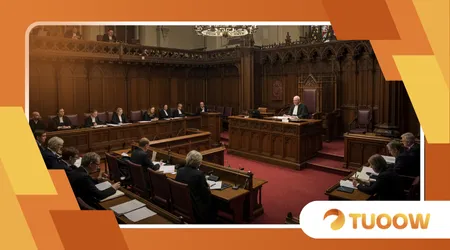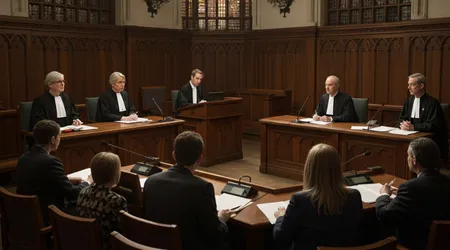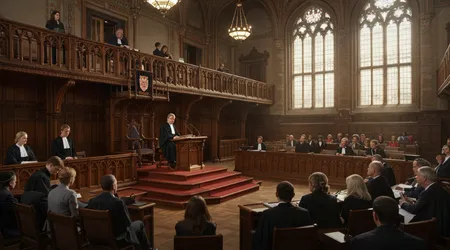High Court Rules on Major Immigration Policy Challenge

High Court Rules on Major Immigration Policy Challenge these words echoed across the UK on July 15, 2025, as the High Court delivered a landmark ruling.
This decision, centered on the government’s controversial immigration reforms, has ignited debates about national security, human rights, and economic stability.
With the Home Office’s Statement of Changes HC 836 and HC 997 reshaping visa rules, the court’s intervention marks a pivotal moment.
This article dives into the ruling’s implications, unpacking its legal, social, and political ripples with clarity and depth. Why does this matter now?
Because the UK’s immigration framework is at a crossroads, balancing compassion with control in a post-Brexit era.
The ruling addresses challenges to policies like the Electronic Travel Authorisation (ETA) and Skilled Worker visa restrictions.
It’s not just legalese it’s about real people, from care workers to families seeking reunion. With the government pushing for tighter borders, the court’s decision could redefine who gets to call the UK home.
Let’s explore the legal battle, its human stakes, and what’s next for Britain’s immigration landscape, all grounded in verified insights and real-time developments.
The Legal Battle: Unpacking the High Court’s Decision
The High Court Rules on Major Immigration Policy Challenge with precision, targeting the Home Office’s recent immigration rule changes.
On July 15, 2025, Mr. Justice Chamberlain questioned the secrecy surrounding a resettlement scheme.
This scheme, part of HC 836, allows thousands to enter the UK without transparent vetting, raising national security concerns. The court demanded clarity, arguing taxpayers deserve to know who crosses their borders.
Immigration rights groups challenged the policy’s lack of oversight. They argued it risks admitting unvetted individuals, potentially compromising safety.
++ Third Consecutive Heatwave Hits UK Amid Water Crisis and Drought
The Home Office defended its approach, citing national security needs.
Yet, the court sided with transparency, ordering a review of the scheme’s processes. This isn’t just a legal win it’s a call for accountability in immigration governance.
The ruling also scrutinized the ETA requirement for Europeans, effective April 2, 2025. Critics argued it unfairly burdens legitimate travelers.
The court’s decision to uphold the ETA reflects a balance between open borders and security. It’s a reminder: immigration policy must navigate practicality and principle without alienating allies.

Human Impact: Stories Behind the Policy
Beyond the courtroom, the High Court Rules on Major Immigration Policy Challenge affects real lives. Take Maria, a Portuguese nurse needing an ETA to work in the NHS.
The new rules, effective July 16, 2025, could delay her start, leaving hospitals understaffed. Her story mirrors thousands facing bureaucratic hurdles.
Then there’s Ahmed, a care worker whose family can’t join him due to HC 997’s restrictions on RQF 3-5 occupations.
Also read: HS2 Project in Turmoil: Transport Secretary Calls It an ‘Appalling Mess
From July 22, 2025, these workers face family separation, echoing policies for care workers. The court’s ruling offers hope, demanding fairer application processes. It’s a lifeline for families torn apart by policy.
Consider the analogy of a dam: immigration rules control the flow of people, but a crack like this ruling can shift the entire structure.
The court’s intervention ensures the dam doesn’t burst, balancing inflow with stability. Yet, for individuals like Maria and Ahmed, the wait for clarity feels endless.
Economic Stakes: Jobs, Skills, and Stability
The High Court Rules on Major Immigration Policy Challenge, impacting the UK’s labor market. The closure of the Social Care Worker Visa route on July 22, 2025, threatens care homes.
A 2024 report estimated 152,000 care worker vacancies, worsened by visa restrictions. Employers now face a staffing crisis.
Businesses hiring skilled workers also feel the pinch. HC 997 raises salary thresholds for roles like marketing directors to £87,300.
Read more: Labour Rebellion: Inside MPs’ Pushback Against Welfare Reform
The court’s ruling questions these hikes, arguing they deter talent. Small firms, unable to pay premium salaries, risk losing global competitiveness. It’s a high-stakes gamble for the economy.
The ruling pushes for a review of the Immigration Skills Charge. This could ease burdens on employers sponsoring RQF 6+ roles.
Yet, without swift action, industries like tech and healthcare may struggle. The court’s intervention is a wake-up call: economic growth hinges on balanced immigration policies.
| Policy Change | Effective Date | Impact |
|---|---|---|
| ETA for Europeans | April 2, 2025 | Mandatory travel authorization, potential delays for visitors |
| Social Care Visa Closure | July 22, 2025 | Ends overseas recruitment, exacerbates care sector shortages |
| RQF 3-5 Family Restrictions | July 22, 2025 | Bars family members for new workers, affects retention |
| Salary Threshold Increase | July 22, 2025 | Raises minimum for skilled roles, impacts small businesses |
Political Ripples: A Polarized Debate
When the High Court Rules on Major Immigration Policy Challenge, it stirs Westminster’s pot. The Labour government’s “Restoring Control” white paper, published May 12, 2025, promised tighter borders.
But the court’s ruling exposes cracks in its execution, fueling Conservative critiques of weak enforcement.
Public opinion splits sharply. A YouGov poll from July 2025 shows 58% support stricter immigration but demand transparency.
The court’s call for openness aligns with this sentiment, challenging Labour’s secretive resettlement scheme. Politicians now face pressure to balance voter trust with human rights obligations.
Brexit’s shadow looms large. The ruling underscores tensions between sovereignty and international cooperation, like the UK-France deal to return 50 small boat migrants weekly.
Legal challenges in France could derail this, showing the ruling’s ripple effect beyond UK borders. Politics, it seems, is a tangled web.
Global Context: The UK in a Borderless World
The High Court Rules on Major Immigration Policy Challenge, but it’s not just a UK story. Globally, nations grapple with migration surges.
The US faces similar legal battles, with federal judges blocking Trump’s birthright citizenship ban in July 2025. The UK’s ruling mirrors this trend of judicial oversight.
Europe’s migration pacts, like the Dublin III agreement, once limited legal challenges. Post-Brexit, the UK lacks such frameworks, making court interventions vital.
The High Court Rules on Major Immigration Policy Challenge signals to the EU: Britain prioritizes control but faces legal limits.
International businesses watch closely. The court’s push for fair visa processes could reassure global talent.
Yet, stricter rules risk isolating the UK economically. It’s a tightrope walk: can Britain secure its borders while remaining a global hub? The ruling suggests a cautious yes.
Looking Ahead: What’s Next for UK Immigration?

As the High Court Rules on Major Immigration Policy Challenge, the future remains fluid.
The Home Office must revise resettlement schemes by September 2025, per court orders. This could mean stricter vetting or public disclosure, reshaping public trust in immigration systems.
Employers face urgent tasks. Auditing pay scales and sponsorship processes is critical before July 22, 2025, when HC 997’s rules tighten. The court’s ruling offers a window for advocacy businesses must push for practical reforms to avoid talent shortages.
For migrants, the ruling is a beacon of hope. It demands fairness in visa applications and family reunions.
Yet, with policies like the Private Life route correction starting July 29, 2025, clarity is months away. The High Court Rules on Major Immigration Policy Challenge, but the fight for balance continues.
Conclusion: A Nation at a Crossroads
The High Court Rules on Major Immigration Policy Challenge, and the UK stands at a pivotal juncture. This ruling isn’t just about laws it’s about people, jobs, and national identity.
From Maria’s delayed NHS dreams to Ahmed’s separated family, the human cost is real. The court’s demand for transparency and fairness challenges the government to rethink its approach.
With 152,000 care worker vacancies and rising salary thresholds, the economic stakes are sky-high. Politically, the ruling exposes Labour’s vulnerabilities while echoing global migration debates.
What will Britain choose: compassion or control? The answer lies in how policymakers respond to this judicial wake-up call.
The High Court Rules on Major Immigration Policy Challenge, urging a system that’s secure yet humane. As 2025 unfolds, this ruling will shape the UK’s borders, economy, and soul. Stay engaged because this story is far from over.
Frequently Asked Questions
What does the High Court’s ruling mean for migrants?
It demands transparency in resettlement schemes and fairer visa processes, potentially easing family reunions and application hurdles.
How will businesses be affected by the ruling?
Employers must audit sponsorship processes to meet new salary thresholds and visa rules, or risk talent shortages.
Sources:
